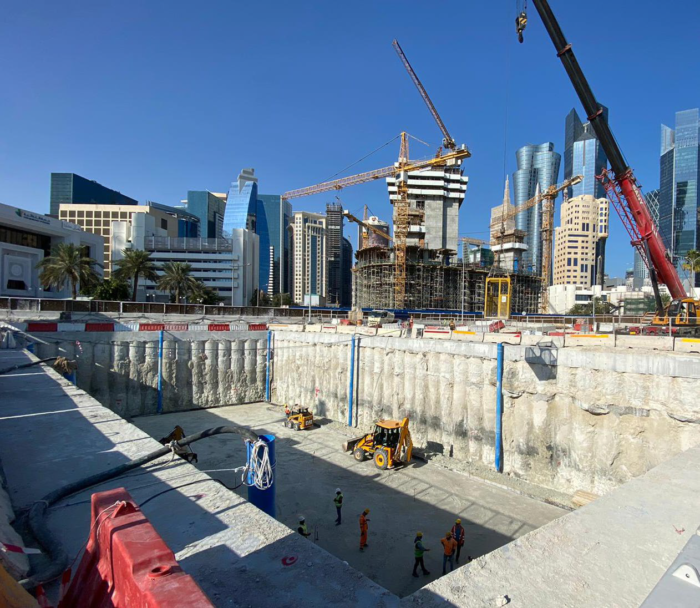Henk van Tongeren Water & Techniek BV has over 70 years of technical experience and delivers versatile solutions in the field of water and technology to both business customers and the government. They put water to work to get major infrastructure, construction and water projects moving, to support governments with their water management and to help the world move forward. On character and with sustainable and innovative installation and groundwater techniques.
With 6 locations across The Netherlands with the aim of helping the world move forward.
Apeldoorn (HQ), Appingedam, Eibergen, Zwolle Drachten and Alkmaar.

General
The project Blankenburgverbinding consist the connection between the A15 and A20 near Rotterdam. The Dutch Government is the principal for this project. The contractor is BAAK BV. The highway is about 6 km long and consist for 4 kilometers out of tunnels and other sunken locations. At this moment, the Blankenburgverbinding is the biggest dewatering project of the Netherlands.
Here below are some key numbers that relate to the dewatering:
Project time 2019 until 2024
• Estimated turnover of €11.3 million.
• Deployment of approx. 280 pumps
• A total of 8 kilometers of pipe.

Technically challenging project
Main contract:
The government has set up a Design & Construct contract. This means that the contractor must arrange all permits himself, including all water permits. The Water Boards (2 for this project) also had the grant its permits. Before getting the permits, the contractor has to make the design first, get a approval and after that the contractor can apply for the permit.
Soil structure:
The soil structure is very erratic. The project area is near the river ‘Het Scheur’ and the soil structure
consist out of layers clay and peat. It is a typical meander soil structure. It concerns a polder
landscape with many different polder levels. The soil is prone to settlement.
Innovation and complexity of dewatering
methods and technique used
• Deployment of 30 DSI groundwater return wells to reduce the environmental influence of
the project area.
• The groundwater consists a lot of iron and salt. The dewatering installation is built
anaerobically (>80%) to reduce the effect of iron in the system.
• Due to the different soil layers, there are also many different rise heights in the different soil
layers. During the design phase, this was taken into the design of the dewatering installation.
Technical risk identification and mitigation

Environmental influence: Too much lowering of the groundwater level:
To measure the groundwater levels, they installed
122 monitoring wells including divers. With this
divers we can monitoring 24/7 the groundwater
level. As mentioned, the landscape consists of
various polders with their own levels. This ensures a specific approach and monitoring requirements for each polder.
Salt water:
The project is located near the Nord sea, so the groundwater is very salty. The build a robust system,
they use a lot of HDPE material. In addition, they will inspect the pipes weekly to determine that the are still
good.
Different soil structures:
The centre of the project is the river ‘Het Scheur’’. The north port of the project has a different soil
structure than the southern part (including differ water levels and Water Boards). The dewatering
installation of the northern part is different than the southern part.
HSE workforce safety considerations
The contractor BAAK maintains a zero tolerance policy in the field of safety. In the first place, they
punish the employee. If employees of a particular company break the rules too often, the company
will be rejected from the project.
Before entering the constructions site, every employee receives a safety instruction which is followed
with a test. The test has to be repeated every year. BAAK uses several safety coordinates to control
safety on the construction site. The construction site has additional safety requirement with regard
to.
Before they can start with our dewatering activities, they make a project specific HSE plan. The
enforcement of the HSE plan is checked periodically.
Sustainable methods considered / used
All pumps to be used are electric. These are powered by a fixed power connection. They only use
generators as a backup in case of a failure. This is the cleanest energy source at the construction site.
As mentioned, they installed 122 groundwater monitoring wells including divers. The measured
groundwater level is linked to the control of the pumps. They control the groundwater level with
minimal running times of the pumps. The less time the pumps run, the less water is extracted, which
in turn results in lower energy consumption. With this they also limit the environment influence. Less
groundwater extraction also results in less settlement risk.
Overall Impressiveness of dewatering project
It is a very large and complex area. Because of the different soil structures and construction methods,
the project actually consists of 2 projects, north and south. Many different stakeholders, such as the
Port of Rotterdam Authority, have an interest, and therefore an influence on the work. The planning
is often under pressure. This requires them to be very adaptable.
As mentioned, the soil is susceptible to settlement. Due to the changed planning, they cannot simply
carry out any dewatering. They must first check whether this change will have a negative effect on the
environment.














